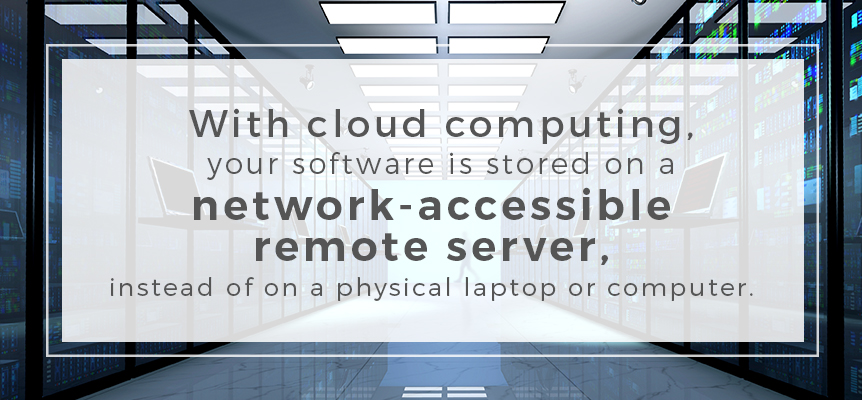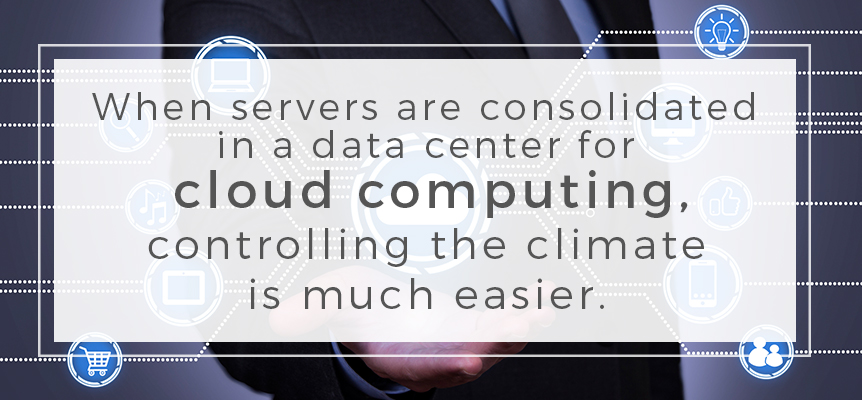
Finding ways to make a business more environmentally offers substantial payoffs. It can lower the cost of doing business and speed up your work. Energy efficiency has also become a major selling point, helping businesses attract and keep new customers.
Energy efficiency and environmental sustainability are one of the biggest consumer trends of the past decade. Nine in ten consumers expect businesses to be socially and environmentally responsible.
Many consumers are willing to pay more for environmentally friendly products. A survey showed just how important sustainability is for customers:
- 57% would purchase a lower quality product if it was more environmentally sustainable
- 84% of customers consider social or environmental sustainability when deciding where to shop
- 88% will be more loyal to a company that’s environmentally efficient

The demand for environmental sustainability doesn’t stop at the supermarket. Environmental efficiency at home is a $240 billion dollar industry. Nearly three in four homeowners say that energy efficiency is one of their top priorities. As a result, demand for energy efficient construction, HVAC and electrical has taken off.
With these potential benefits, it’s no surprise that more construction businesses and contractors are taking a look at the environmental impact of their businesses. From reconsidering where to source materials to getting Energy Star or LEED-certified products, there are multiple ways to tap into this lucrative market.
What is the Environmental Impact of Business Computing with Dataforma?
If your business is like many others, energy efficiency isn’t your bottom line. Sure, it’s nice to have. But expensive energy efficiency projects aren’t easy on a small budget. That means it’s important to know that you’ll be getting good value from your initiative, before you make an investment.
So it’s good to know that little changes — like energy efficient computers in your office — can make a big difference, financially and environmentally. And with the growing range of software offered via cloud computing, especially with Dataforma, you have more choices than ever.

Typical Energy Consumption of Office Computers
| Type | Kwh/year |
| Slate/Tablet | 10 |
| Notebook | 75 |
| Integrated Desktop | 210 |
| Desktop with Monitor | 280 |
If your business is already using slates, tablets, or phones in the field, your field contractors are already using some of the lowest energy use electronics available.
The bad news is that most small business computers aren’t that energy efficient. Because many businesses leave their computers on while they’re not using them, they actually end up paying for more energy than they need. One study showed that the average desktop computer in a small business was used for only 5 to 10 percent of the time!
Private servers fare even worse. The average server uses between 1,314 and 2,600 Kilowatt hours of electricity each year. Finding a more energy efficient alternative to your server can make a big impact on your bottom line.
Most businesses have two options for greening their data storage. The first option is to invest in an energy efficient server. The EnergyStar program has been certifying servers as EnergyStar compliant since 2009. These servers are about 30 percent more efficient than uncertified models.
The second option is to use cloud computing – for example, with Dataforma – instead of a physical server. This can be a cheaper and more environmentally efficient option — but only if it’s done right. Read on to find out more about the cloud computing and its impact.
What is Cloud Computing?
Cloud computing has been one of the biggest business trends of the past few years. Whether or not your business already has some experience with cloud computing, this is dramatic shift that you’ll need to adapt to.

Cloud computing might be a popular buzzword, but many people aren’t sure exactly what it means. So here’s a quick definition:
With cloud computing, your software is stored on a network-accessible remote server, instead of on a physical laptop or computer. You can access your work anywhere you have Internet access. This means that you don’t need to go to the office to access your work files. You can get them right there in the field.
Other features of cloud computing includes:
- On demand access to programs and files
- Data stored on multiple servers instead of on a single computer
- Rent storage space in large data centers instead of providing data storage in your office
- Pay as you go pricing instead of buying software outright
Although cloud computing has been a buzzword for the last few years, it’s actually a much older concept. One computer pioneer, J.C.R. Licklider, talked about creating an Internet that would let you access documents from anywhere way back in 1969. Salesforce became the first major company to use cloud computing in 1999.
Public clouds, like Amazon Web Services, made cloud computing possible for many more businesses. Instead of paying for lots of storage space, businesses are able to scale their data storage — and costs — with their needs.

Today, most businesses use at least some form of cloud computing. In fact, one survey showed that 95% of all businesses used software delivered via cloud computing. It’s even more common for individuals. Cloud computing makes it possible to access email, Facebook, and your banking software on the go. It’s also what Netflix uses to deliver TV shows to your computer.
Cloud computing with Dataforma offers a number of benefits for businesses, including:
- More flexibility
- Easy backup options to help with recovering data
- No need to maintain or update software
- Makes real time updates possible
- Easier for team members to collaborate on projects
- Access work documents from in the field
- No capital expenditures for new software
- Improved data security
Cloud-based software is ideal for businesses that are growing, or who have major seasonal changes. It’s much easier and faster to scale your cloud-based software up or down than it is to scale physical servers. So if your business is growing, you can expand your storage as you need it. And if you’re in a seasonal industry like roofing or HVAC, you can expand your software storage for busy seasons and reduce during slower ones with Dataforma.
Many small and medium sized businesses have realized this benefit of cloud computing. In fact, small businesses are twice as likely to set up cloud based backup systems than large businesses.
What is the Environmental Impact of Using the Cloud?
The green benefits of cloud computing are rarely mentioned. Using the cloud is usually thought of as a cost-saving measure, not an environmental one. But cloud computing can be an environmentally friendly alternative to traditional business computers.
Higher Server Use Rates

This is one of the biggest benefits of cloud computing with Dataforma. For many small and medium sized businesses, only five to ten percent of a server is used. But servers need to be on around the clock, just in case you need to access data.
Typical Server Use: 5-10%
Cloud Computing Server Use: 60-70%
Compare this to accessing your data via the cloud. The data center that hosts your data can maintain use rates of 60 to 70 percent, much higher than most businesses get. That’s because they host data and software for many businesses, which leads to less wasted energy.
Energy Efficient Equipment
Energy savings is the biggest green benefit of cloud computing with Dataforma. Data centers are able to purchase more energy efficient equipment and allocate its use more effectively. For a small business, buying a server is a large capital expense. That means that it’s hard to justify replacing it, unless it’s damaged in some way. Many businesses use older servers instead of upgrading to newer, more energy efficient models.
But data centers require fast, energy efficient equipment. That means that your business can have the benefits of this energy efficient equipment, and you can focus on your job, instead of moonlighting as an IT professional.

Dynamically Allocated Resources
This term sounds technical, but simply means that you’ll get the server space you need. If you’re like most contractors, your computer use isn’t consistent. In peak seasons, you may have more employees in the field, and need more software licenses to accommodate them. You may also require more storage for work documents like invoices, blueprints and work orders. But in less busy seasons, this extra storage space will be wasted.
Cloud computing with Dataforma offers a solution to that. Data centers use this process to allocate more resources to your business when you need them. And when you don’t, other businesses with a different schedule can access the servers instead. This is a more energy efficient alternative to having a small business buy extra servers to handle peak loads, only to sit idle the rest of the year.
Improved Climate Controls

Most servers require a narrow temperature range to run at peak performance. The humidity and heat in the server room needs to be carefully controlled. For many small businesses, attempting to create energy efficient climate controls for a server is expensive and time consuming.
But when servers are consolidated in a data center for cloud computing, controlling the climate is much easier. Many data centers use special layouts and climate controls to help their servers maintain energy efficiency. Although these special designs are hard for small and medium businesses to maintain, they’re a key part of most cloud hosts’ jobs.
Cloud hosting with Dataforma can have a big impact on a business’ energy efficiency. One recent study showed that a large business that moved just one job function to the cloud saved more than 30,000 metric tons of carbon dioxide in five years. That’s the equivalent of taking 5,900 cars off the road.
What are the Disadvantages of Cloud Computing?
The environmental impact of cloud computing isn’t all positive, of course. There are plenty of criticisms about cloud computing as well. Cloud computing is a growing industry, and can use massive resources when done poorly.
Some of the criticism of cloud computing are:
Data Centers Have High Energy Use
High energy use is one of the most common complaints about the data centers that power cloud computing. Data centers now use about two percent of all electricity generated in the U.S. In 2014, data centers used approximately 70 billion kilowatt hours of electricity.
Data centers do require a lot of power, but their demands are dropping. Energy efficiency improvements in data centers have already saved about 40 billion kilowatt hours of electricity, and will save significantly more over the next decade. Technical improvements have also started to decrease the number of servers that are used by data centers. Better virtualization techniques mean lower energy use.
In the same vein, cloud computing also uses electricity more effectively than private servers do. It would take significantly more electricity to power software on individual computers than it does via the cloud.
Look for software hosted by energy efficient data centers, like Dataforma. Some data centers are even powered by renewable energy. We’ve provided a list of questions at the end of this article that can help you find an energy efficient cloud software provider.
The “Invisible” Energy Use of Data Centers

Another, growing critique of cloud computing is that it discourages people from saving energy. Unlike home electronics, users don’t see or hear the computers and generators turned on. And because the cost of electricity is often bundled into the price of the software subscription, people don’t notice the expense. All this means that users are more likely to waste energy, which drives up overall electricity use.
This critique is certainly valid. Behavior changes can have a big environmental impact. And many people find it easier to save energy when they see the impact directly. However, few field technicians interact directly with the server that powers their company’s software.
If you’re concerned about higher energy use, look for alternative ways to encourage technicians to save energy. Energy efficient tablets, slates and smartphones to access cloud-based software are a good way to keep energy efficiency front and center.
Data Centers Use Dirty Energy Sources
Another major criticism of cloud computing is where the electricity to power the cloud is obtained. Because of their massive energy demands, the data centers powering cloud software can have a big impact on carbon emissions and greenhouse gasses.
Not all cloud servers are equal. Some cloud servers rely heavily on renewable energy sources, while others depend on coal and oil to generate their electricity. Many critics also point to a lack of transparency about energy sources as a big problem.
Data centers don’t always share information about their energy sources. And many well known cloud companies, including Apple, HP, and IBM, depend heavily on coal. However, there is a wider range of cloud software running on renewable energy than ever before. Greenpeace has a comprehensive report on the green benefits of different cloud providers available on their website. Or you can ask software providers about the energy sources that power their cloud.
Finding an Environmentally Efficient Cloud Company

These downsides are why it’s important to find the right cloud company to host your software. If you’re looking for cloud hosting that offers green benefits, a few questions can help you find the right company.
Ask potential cloud providers these questions:
- Does the data center they use have renewable energy sources?
Many data centers are powered by wind, solar or hydroelectric. Some data centers are fully powered by renewable resources, others partially so. If you want to maximize the green benefits of cloud computing, look for cloud software that uses these environmentally sustainable data centers. It can help to ask whether they have plans to change their power sources in the next few years as well.
- Does the data center use an environmentally efficient design?
Data centers can be set up in ways that maximize energy efficiency. EnergyStar certified servers, or servers with variable speed fans, are more efficient than other types of servers. But data centers can also group equipment that tends to run hotter together to minimize cooling needs in the rest of the data center. Where cables and equipment racks are placed can also affect a data center’s energy efficiency.
- Does the data center have EnergyStar or LEED certification? Is it working toward one?
If you’d like to find out about energy efficiency without getting into the nitty-gritty of data center design, this is a good question to ask. Environmental programs like EnergyStar and LEED offer certifications for businesses that use energy efficient designs and equipment. If the cloud host you’re considering has one of these certifications, a third party has already verified their energy efficiency. Be aware that these certifications can take some time to obtain, so ask whether a data center is working toward obtaining this certification if it doesn’t already have one.
- What are the data center’s server usage rates?
Most cloud companies maximize energy efficiency by having much higher server usage than a standard business. Look for cloud companies that maintain this high server usage. A data center should ideally have usage rates of at least 60 percent, compared to a standard small business’ server usage rates of less than 10 percent. Don’t look for cloud hosting from a data center with 90 to 100 percent server usage rates. These rates won’t allow you the flexibility you need during peak seasons.

The servers that host our Dataforma software for field service contractors meet some of the highest industry standards around. Our cloud based software gives you access to an energy efficient alternative to traditional CRM programs. Along with the green advantages of cloud computing, you’ll have access to unparalleled account security.
Ready to find out more about the benefits of cloud computing?
CONTACT US








